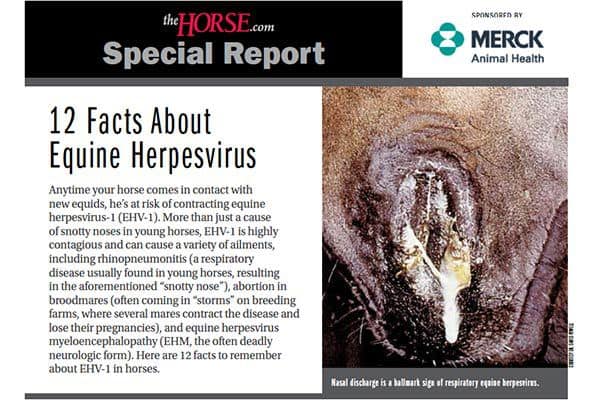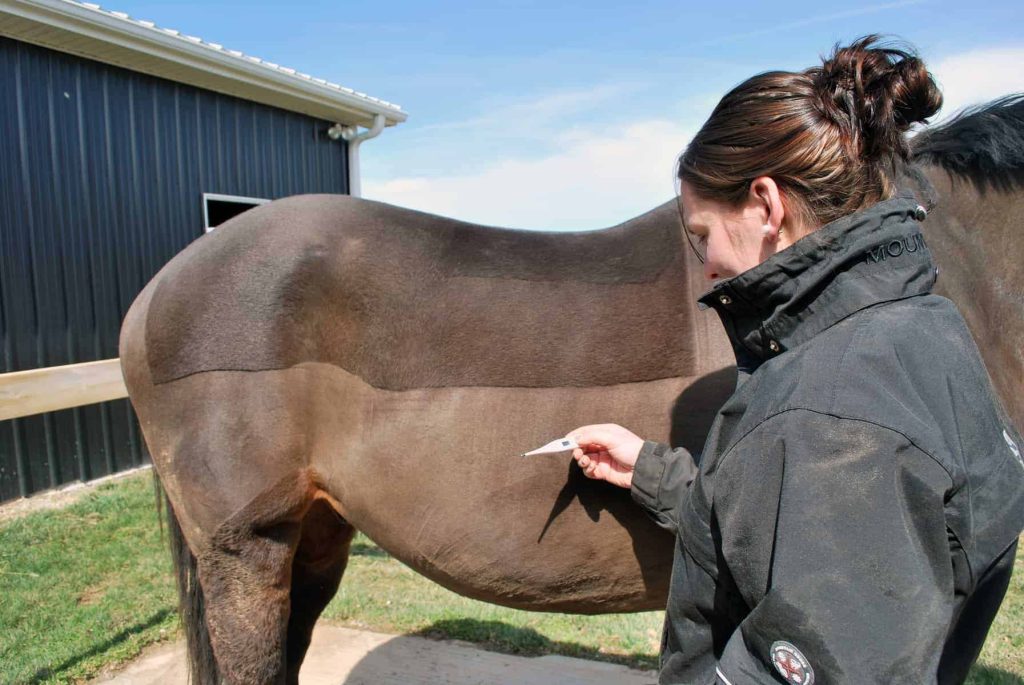
Special Report: 12 Facts About Equine Herpesvirus
EHV-1 is more than just a cause of snotty noses in young horses. Learn more about this highly infectious disease and how to protect your horse in this special report.

EHV-1 is more than just a cause of snotty noses in young horses. Learn more about this highly infectious disease and how to protect your horse in this special report.

Steve Reed, DVM, Dipl. ACVIM, of Rood & Riddle Veterinary Hospital, in Lexington, Kentucky, offers his insight about equine herpesvirus-1, including diagnosis, treatment, and prevention.

Confirmed diseases include equine influenza, equine herpesvirus, piroplasmosis, salmonellosis, rabies, and more.

With equine herpesvirus infections seemingly on the rise, here’s how to protect your horses this season.
The symposium and dinner will take place Thursday, Sept. 20, from 4-7:30 p.m., at Malone’s Prime, in Lexington, Kentucky.

Routine horse vaccinations are one of the easiest and most efficient ways to protect equids’ health against potentially fatal infectious diseases.

A barrel racing horse developed rapidly progressive signs of EHM (the neuorlogic form of EHV-1) on April 19 and was euthanized the same day.

The index case–a 17-year-old Thoroughbred gelding diagnosed with EHM, the neurologic form of EHV-1–remains quarantined and isolated offsite and continues to show clinical improvements.

The mule exhibited mild respiratory clinical signs and ultimately died due to pneumonia complications.

The affected horse from Weld County is undergoing veterinary treatment and recovering.

A 17-year-old Thoroughbred gelding was diagnosed with EHM, the neurologic form of equine herpesvirus-1 (EHV-1) after developing neurologic deficits.

The horse that tested positive for EHV-1 has traveled extensively in South Dakota for cutting and sorting events in the past few weeks.

The horse was moved to an isolation area at his home farm and the premise has been quarantined.

The EHM-positive 5-year-old Standardbred gelding from Washtenaw County developed acute neurologic signs and is isolated and under veterinary care, officials said.

Equine herpesvirus-1, or EHV-1, infection can result in late-term abortion in pregnant mares.

The second horse developed a fever and respiratory signs of disease, but has not yet exhibited any neurologic deficits.
Stay on top of the most recent Horse Health news with
"*" indicates required fields